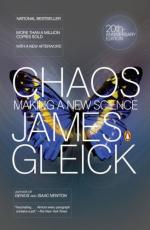
|
| Name: _________________________ | Period: ___________________ |
This quiz consists of 5 multiple choice and 5 short answer questions through Chapters 5-6.
Multiple Choice Questions
1. What refers to a computer program or network of computers that attempts to simulate an abstract model of a particular system?
(a) Computer virus.
(b) Computer army.
(c) Computer model.
(d) Computer hardware.
2. What, according to the author, are created out of things that have come to an end?
(a) Fractal basin boundaries.
(b) Cosmic arrhythmias.
(c) Cantor dust.
(d) Revolutions.
3. What is a natural science concerned with the study of life and living organisms, including their structure, function, growth, origin, evolution, distribution, and taxonomy?
(a) Biology.
(b) Butterfly effect.
(c) Physics.
(d) The Navier-Stokes equation.
4. Although James Yorke was a brilliant mathematician, he often referred to himself as what?
(a) A monk.
(b) A philosopher.
(c) A rebel.
(d) A martyr.
5. What mathematical term refers to the Euclidean plane and three-dimensional space of Euclidean geometry, as well as the generalizations of these notions to higher dimensions?
(a) Boundary layer.
(b) Cantor dust.
(c) Euclidean space.
(d) Gradient.
Short Answer Questions
1. In what year did Benoit Mandelbrot recognize the ghost of an idea when he spotted a diagram charted out on the blackboard in Hendrik Houthakker's office?
2. What were the subjects allowed to glance at one at a time in the experiment from the 1940s described by Gleick in Chapter 2, "Revolution"?
3. In fluid dynamics, what consists of a viscous fluid confined in the gap between two rotating cylinders?
4. When was Harry L. Swinney born?
5. If a system is in what state, then the recently observed behavior of the system will continue into the future?
|
This section contains 252 words (approx. 1 page at 300 words per page) |

|




